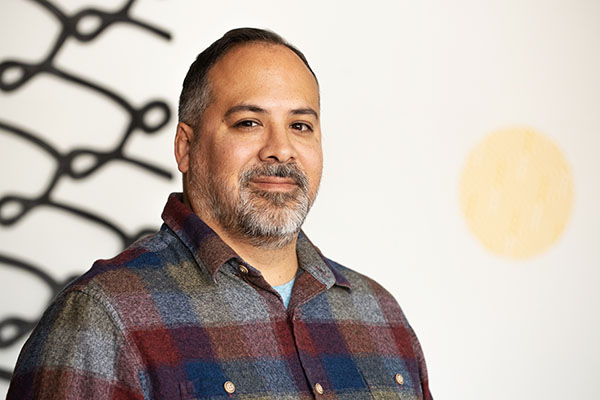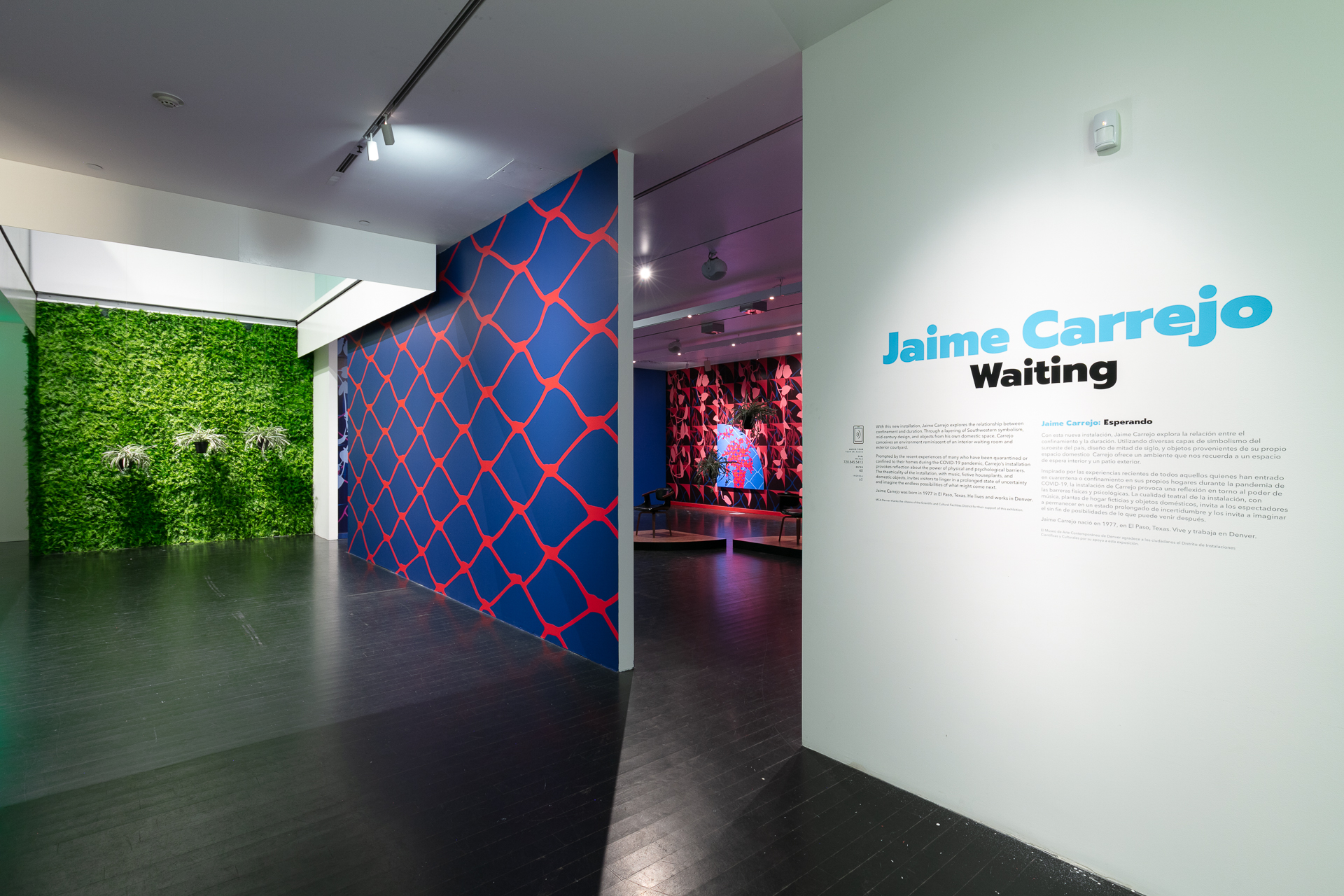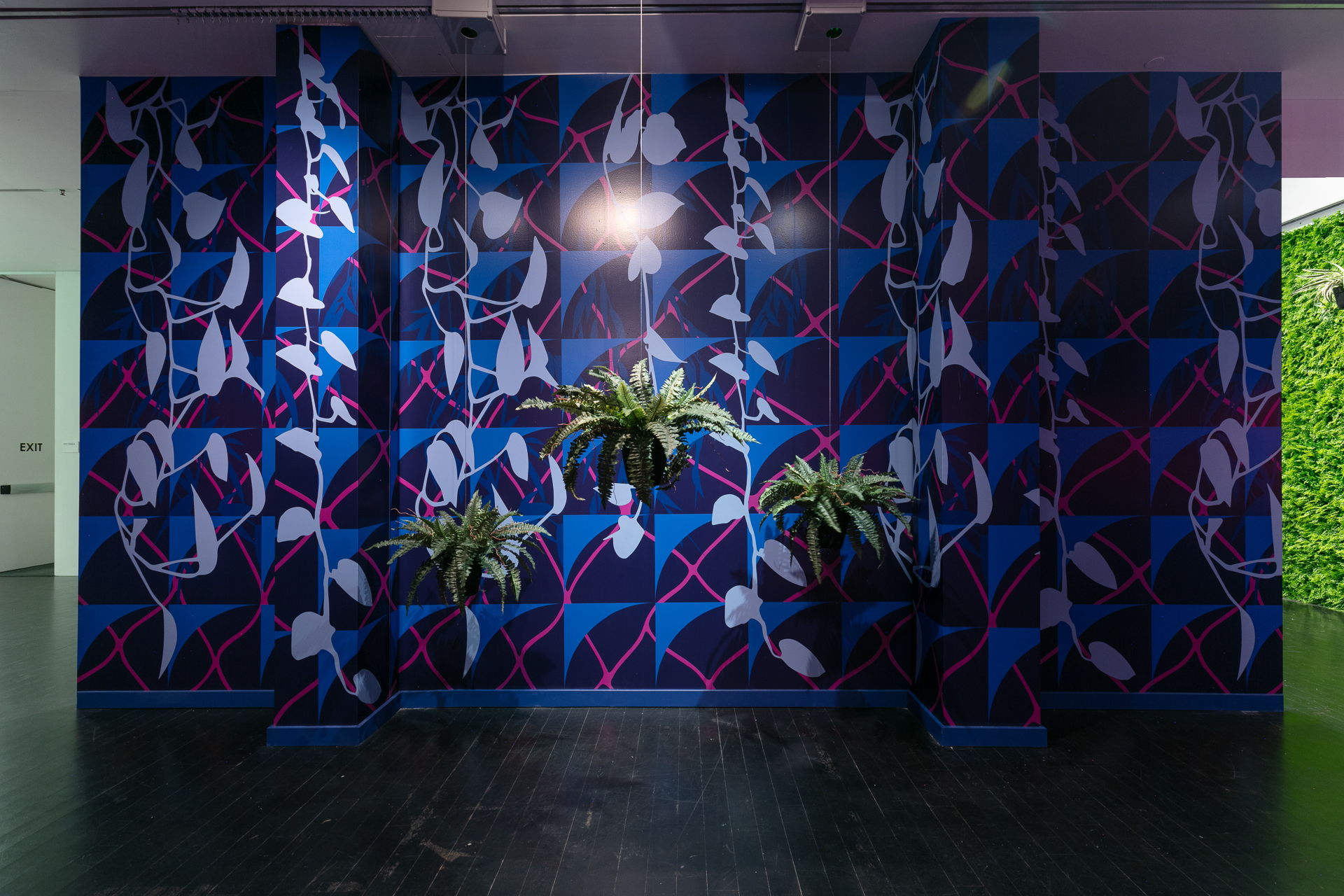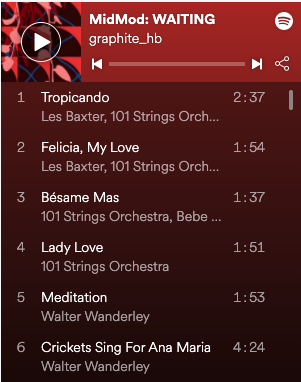Art
June 2, 2021
Jaime Carrejo Talks About Waiting, His Current Exhibition and Shares a Playlist of Summertime Inspiration
Jaime Carrejo: Waiting presents a new installation by the Denver-based multi-disciplinary artist that explores the relationship between confinement and duration. Through a layering of Southwestern symbolism, mid-century design, and objects from his own domestic space, Carrejo offers an environment reminiscent of an interior waiting room and exterior courtyard. We chatted with Carrejo to learn more about the concept behind Waiting and how 2020 changed how we see and experience time.

Hi Jaime! How have you been?
I’m doing okay! I feel optimistic, hopeful, and thankful. It’s been a strange, heartbreaking fourteen months. And yet, we are still here. So, all in all, I am grateful that I am able to take a deep breath every morning.
How did you come up with the concept behind your exhibition Waiting?
I had quite a bit of unease about the state of the world, politics, and the well-being of my family and friends when we went into lockdown. I was so stressed out I felt helpless. My home became a place of safety and confinement where work and life merged. My partner and I settled into our makeshift home office spaces and noticed many of our house plants were dying. Some thrived regardless of our lack of attention. We moved plants around the house, made notes on which plants grew well in each room, and read up on the varieties in our spaces to pass the time. We created watering schedules, had conversations with the plants, and watched them grow on our windowsills. I had a show planned at Alto Gallery in the fall of 2020, and my studio at Tank was closed. Our backyard became my new studio, where I decided to make paintings of our house plants.
When making the paintings, I began to think of the plants as barometers of our level of distraction and deep care. Our relationship with plants can be intimate, like sinking a finger into the soil or distant when we forget to water one in a separate room. These ideas and experiences led to the MCA exhibition. Through conversations with [Mark G. Falcone Director at MCA Denver] Nora Burnett Abrams, I landed on a waiting room space as the anchor point of the exhibition.

The color palette of Waiting incorporates vibrant colors of pinks, reds, blue, and black. Is there significance in the selection of these colors and their therapeutic or sensory properties?
Absolutely. The color palette uses warm and cool contrast to create the mood. I selected hues from sunrises and sunsets to mark the beginning and end of a cycle. I wanted to use a contrasting color palette and positioned the hues as opposites through the wallpaper and paintings. I also played with a color effect called simultaneous contrast where our perception of complementary colors next to each other appear to shift in saturation and hue when placed near each other. In reality, the colors have not changed. The color shifts we perceive are due to reflections of light. We notice changes in light and dark values in new ways. This phenomenon seemed poetic when thinking about the last year and how people might develop new priorities in the years ahead. That’s the wonderful thing about time and having to wait. It forces us to dig in, walk away or see things from a different perspective.
There are plants in the exhibition, from the ferns and spider plants to the peace lilies. Was there symbolism within the plants you chose to include?
When I visited the MCA for our initial planning meetings, I noticed the lighting differences upstairs and downstairs. It resonated with me. I began thinking of the up and down emotions My friends, family, and I were experiencing. I decided to work on an idea where plants moved up and down. It is an important part of the installation.
Plants are also important in the paintings and wallpaper. For the wallpaper, I chose Pothos as the main component. It was one of the plants in our home that thrives regardless of living conditions. It is resilient, hardy, and quite strong. Behind the quarter circle pattern are weeping willow branches. I selected the weeping willow due to its name and resilience as well.
The paintings incorporate the silhouettes of a palm, a peace lily, and a non-vining philodendron. I documented the life of all three plants in my studio. I did not water them for a time and they withered. The paintings draw from the periods they were the healthiest and most neglected. The palm and peace lily were chosen because of their connection to peace and tranquility. I picked philodendron for its relationship to new growth.
The shape of the paintings was also intentional. Analog clocks are round and I broke the shape into quarters. The shape is also indicative of an archway or passage. I think of the shape as the beginning and end of something, be it an hour, a moment in our lives, or a life. Things come and go in cycles.
2020 had a lot of us reflecting on how we spend time and what we spend our time on. What did you learn about how you see the concept or essence of your time or time in general? Do you think that as we move out of the pandemic into a resemblance of normalcy, will this lesson be an adapted change moving forward?
Wow, this is a great question. My friend Gretchen Schaefer and I have discussed ‘attention’ quite a bit over the last year. She often quotes the poet Mary Oliver stating, “Attention is the beginning of devotion.” Where we place our attention defines our time. Our time is the single most valuable thing we have. We can spend it, but we cannot get it back. So, I am striving to be more mindful of what I choose to do and where I decide to place my time. Working day in and day out can be fulfilling depending on the work being done. We also need to pay attention to inequities in our culture, how we care for others, how we care for ourselves. It’s a new lesson for me. I mean, I knew it was important, but when 2020 made us all slow down, my understanding of time changed. What I thought was important is forever changed.

In the exhibition, there is distorted Muzak playing that changes as visitors enter the room. That element of sound that can almost be undetected or amplified. What was the importance of including this in your exhibition?
I wanted to bring in a little bit of waiting room kitschiness into the installation. The audio is made using a procedural software program created by music composer Sean Peuquet. He and I worked together to determine the vibe of the audio. I started by creating a Spotify playlist filled with MidMod music and turntable DJs. I also was listening to chopped and screwed rap from Houston, TX. We took this general framework to create the audio. It was important the sounds sped up and slowed down erratically to mimic the ebb and flow of how life sometimes feels, darting from one thing to another.
Your Spotify playlist Elevator Music, MidMod is such a dreamy compilation of music that I drifted into a hazy daydream listening to it in the park. What role does music play in your creative process?
What a fun question. I want to carry a boombox with me to create a soundtrack of my life like a sitcom. Music helps me frame ideas and articulate feelings words cannot. I enjoy having it around when I am in my studio, at home, and in the car. So, let’s dance, or cry, or sing! It channels how I feel, just like Art, just in a different way.

What are you excited about for this year?
I am looking forward to spending time with my family and friends this summer. A year away from them has been pretty hard, and I want to give people big hugs. I also have a flag project going up at the Momentary in Bentonville, Arkansas. I’m looking forward to seeing it in the sky.
A studio renovation at home is underway and it will be ready to go by the end of June or early July. Once it is done, I'm digging into some new work. I'm also looking forward to heading back to campus and seeing students in person. I miss them dearly. Here's to 2021/2022? Fingers crossed!
To learn more about Jaime Carrejo: Waiting and to view featured artwork in the Octopus Initiative program, visit Carrejo's artist page here.